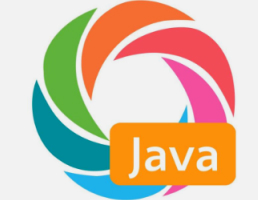动态SQL
MyBatis还有一个方便的功能就是动态SQL,可以根据条件智能生成SQL语句。这里的例子全部来自MyBatis文档。
if标签
下面这个例子使用了MyBatis的if元素,在标题不为空的情况下在查询结果中包含标题的查询。
<select id="findActiveBlogWithTitleLike"
resultType="Blog">
SELECT * FROM BLOG
WHERE state = ‘ACTIVE’
<if test="title != null">
AND title like #{title}
</if>
</select>
where/trim/set标签
如果需要在多个情况中包含某一个查询条件。可以向下面这样,使用choose、when、otherwise。如果使用过JSTL的话,会发现这和JSTL的条件标签非常类似。
<select id="findActiveBlogLike"
resultType="Blog">
SELECT * FROM BLOG WHERE state = ‘ACTIVE’
<choose>
<when test="title != null">
AND title like #{title}
</when>
<when test="author != null and author.name != null">
AND author_name like #{author.name}
</when>
<otherwise>
AND featured = 1
</otherwise>
</choose>
</select>
对于下面这个例子,如果state为空,无法生成合法的SQL语句。
<select id="findActiveBlogLike"
resultType="Blog">
SELECT * FROM BLOG
WHERE
<if test="state != null">
state = #{state}
</if>
<if test="title != null">
AND title like #{title}
</if>
<if test="author != null and author.name != null">
AND author_name like #{author.name}
</if>
</select>
MyBatis自然也有相应的解决办法。就是使用where标签改写。where标签非常智能。如果标签内部没有合适的语句,where标签就不会生成任何东西,防止出现错误语句。
<select id="findActiveBlogLike"
resultType="Blog">
SELECT * FROM BLOG
<where>
<if test="state != null">
state = #{state}
</if>
<if test="title != null">
AND title like #{title}
</if>
<if test="author != null and author.name != null">
AND author_name like #{author.name}
</if>
</where>
</select>
有时候where标签还不能满足需求。这时候还可以使用trim标签进行更高级的定制。trim标签中的prefix和suffix属性会被用于生成实际的SQL语句,会和标签内部的语句拼接。如果语句的前面或后面遇到prefixOverrides或suffixOverrides属性中指定的值,MyBatis会自动将它们删除。在指定多个值的时候,别忘了每个值后面都要有一个空格,保证不会和后面的SQL连接在一起。下面这个例子和where标签完全等效。
<trim prefix="WHERE" prefixOverrides="AND |OR "> ... </trim>
还有一个set标签用于智能执行更新语句。
<update id="updateAuthorIfNecessary">
update Author
<set>
<if test="username != null">username=#{username},</if>
<if test="password != null">password=#{password},</if>
<if test="email != null">email=#{email},</if>
<if test="bio != null">bio=#{bio}</if>
</set>
where id=#{id}
</update>
与它等价的trim标签如下。
<trim prefix="SET" suffixOverrides=","> ... </trim>
foreach标签
还有一个迭代标签可以生成一系列值,这个标签主要用于SQL的in语句后面。
<select id="selectPostIn" resultType="domain.blog.Post">
SELECT *
FROM POST P
WHERE ID in
<foreach item="item" index="index" collection="list"
open="(" separator="," close=")">
#{item}
</foreach>
</select>
bind标签
bind标签可以将非OGNL表达式值绑定到其中。下面的例子将结果映射中的值绑定到了OGNL表达式中,从而可以直接使用#{}语法访问。
<select id="selectBlogsLike" resultType="Blog">
<bind name="pattern" value="'%' + _parameter.getTitle() + '%'" />
SELECT * FROM BLOG
WHERE title LIKE #{pattern}
</select>
SQL构造类
有时候需要在Java代码中生成SQL语句。如果我们直接编写的话会是一件非常麻烦的事情。由于Java不支持跨行字符串,所以我们要么在一行里面写一个非常非常长的SQL语句,要么用加号拼接出一个笨拙的字符串。MyBatis提供了SQL构造类,我们可以方便的使用这个类构造出SQL语句。
下面这几个例子同样来自于MyBatis文档。SQL构造类有两种用法:匿名类和流式构造。构造完成之后,调用toString()方法即可生成对应的SQL语句。
// 匿名内部类
public String deletePersonSql() {
return new SQL() {{
DELETE_FROM("PERSON");
WHERE("ID = #{id}");
}}.toString();
}
// 流式构造
public String insertPersonSql() {
String sql = new SQL()
.INSERT_INTO("PERSON")
.VALUES("ID, FIRST_NAME", "#{id}, #{firstName}")
.VALUES("LAST_NAME", "#{lastName}")
.toString();
return sql;
}
// 如果需要条件构造,只能使用匿名类方式,注意匿名类要引用方法参数的话,参数必须声明为final的
public String selectPersonLike(final String id, final String firstName, final String lastName) {
return new SQL() {{
SELECT("P.ID, P.USERNAME, P.PASSWORD, P.FIRST_NAME, P.LAST_NAME");
FROM("PERSON P");
if (id != null) {
WHERE("P.ID like #{id}");
}
if (firstName != null) {
WHERE("P.FIRST_NAME like #{firstName}");
}
if (lastName != null) {
WHERE("P.LAST_NAME like #{lastName}");
}
ORDER_BY("P.LAST_NAME");
}}.toString();
}
public String deletePersonSql() {
return new SQL() {{
DELETE_FROM("PERSON");
WHERE("ID = #{id}");
}}.toString();
}





